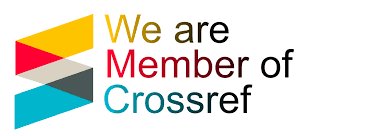THE RESULT OF EMOTIONAL BURNOUT SYNDROME IN SOCIAL WORKERS AS A FACTOR LEADING TO OCCUPATIONAL RISKS
DOI:
https://doi.org/10.63034/esr-17Keywords:
Emotional Burnout Syndrome, Social Workers, Occupational Risks, Job Satisfaction, Well-being, Preventive Measures, Organizational Factors, Coping Strategies, Self-care PracticesAbstract
Emotional burnout syndrome (EBS) has emerged as a significant concern in the field of social work, posing substantial occupational risks for practitioners. This research article investigates the consequences of EBS on social workers, shedding light on the multifaceted challenges they face in their demanding roles. By conducting an in-depth analysis of the factors contributing to EBS and its impact on professionals' well-being, this study aims to provide insights into the broader context of occupational risks within the social work domain. The research employs a mixed-methods approach, combining quantitative surveys and qualitative interviews with practicing social workers. Key findings reveal the intricate relationship between EBS and its consequences, including decreased job satisfaction, compromised physical and mental health, and elevated turnover rates within the profession. Furthermore, the study identifies organizational factors, such as heavy caseloads, limited resources, and inadequate support systems, as primary drivers of EBS among social workers. In addition to comprehensively examining the negative implications of EBS, this article explores potential preventive measures and interventions that can mitigate the risks associated with emotional burnout. The analysis emphasizes the importance of fostering a supportive work environment, enhancing coping strategies, and promoting self-care practices among social work professionals. In conclusion, this research article underscores the pressing need for addressing EBS as a critical issue within the social work field. By recognizing the interconnectedness of emotional well-being, job satisfaction, and the delivery of effective social services, stakeholders can work collectively to minimize occupational risks and promote the resilience of social workers.
References
Ahola, K., Honkonen, T., Isometsä, E., Kalimo, R., Nykyri, E., Koskinen, S., & Lö-nnqvist, J. (2005). The relationship be-tween job-related burnout and depres-sive disorders—Results from the Finnish Health 2000 Study. Journal of Affective Disorders, 88(1), 55–62. https://doi.org/10.1016/j.jad.2005.05.003
Braun, V., & Clarke, V. (2006). Using thematic analysis in psychology. Qualita-tive Research in Psychology, 3(2), 77–101. https://doi.org/10.1191/1478088706qp063oa
Maslach, C., Jackson, S. E., & Leiter, M. P. (1996). Maslach Burnout Inventory manual (3rd ed.). Consulting Psycholo-gists Press.
Mäkikangas, A., Kinnunen, U., & Feldt, T. (2004). Self-esteem, dispositional opti-mism, and health: Evidence from cross-lagged data on employees. Journal of Re-search in Personality, 38(6), 556–575. https://doi.org/10.1016/j.jrp.2003.10.007
Pines, A. M., & Aronson, E. (1983). Ca-reer burnout: Causes and cures. Free Press.
Shirom, A., Melamed, S., Toker, S., Ber-liner, S., & Shapira, I. (2005). Burnout and health review: Current knowledge and future research directions. In A. Antoniou & C. Cooper (Eds.), Research companion to organizational health psychology (pp. 257–283). Edward Elgar Publishing.
Smith, D. W., & Segal, D. R. (2017). Oc-cupational hazards and mental health symptoms among National Guard troops deployed to Iraq. Psychiatric Services, 58(5), 713–719. https://doi.org/10.1176/appi.ps.58.5.713
Stamm, B. H. (2010). The concise ProQOL manual (2nd ed.). ProQOL.org.
Vahey, D. C., Aiken, L. H., Sloane, D. M., Clarke, S. P., & Vargas, D. (2004). Nurse burnout and patient satisfaction. Medical Care, 42(2 Suppl), II57–II66. https://doi.org/10.1097/01.mlr.0000109126.50398.5a
West, C. P., Huschka, M. M., Novotny, P. J., Sloan, J. A., Kolars, J. C., Habermann, T. M., & Shanafelt, T. D. (2006). Association of perceived medical errors with resident distress and empathy: A prospective lon-gitudinal study. Journal of the American Medical Association, 296(9), 1071–1078. https://doi.org/10.1001/jama.296.9.1071
Downloads
Published
How to Cite
Issue
Section
Categories
License
Copyright (c) 2023 Madina Dulatkyzy

This work is licensed under a Creative Commons Attribution 4.0 International License.





